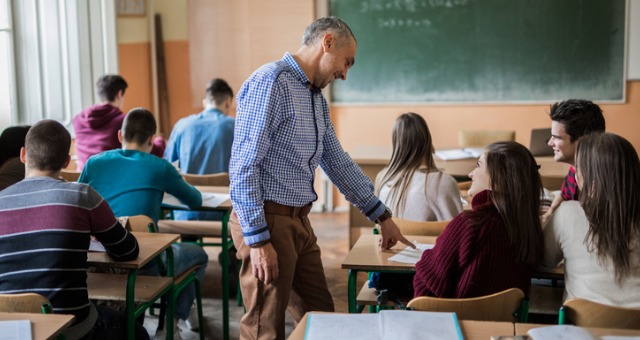Affordable Primary Science Tuition Singapore for All Learning Needs
A Comprehensive Overview to the Numerous Discovering Approaches in Primary Scientific Research Direction
The exploration of diverse understanding techniques in primary scientific research direction presents an opportunity for instructors to improve student involvement and comprehension considerably. By analyzing hands-on learning strategies, inquiry-based techniques, and collaborative methods, we can determine effective techniques that satisfy various finding out styles. In addition, the combination of technology and separated instruction plays an essential duty in promoting a comprehensive environment. Nevertheless, the question stays: just how can these methods be successfully executed in the class to optimize their impact? The solution depends on a better analysis of each method and its effects for training scientific research.

Hands-On Learning Methods
Hands-on knowing strategies play a critical function in main scientific research instruction, engaging trainees in active exploration and trial and error. These methods enable students to engage directly with materials and sensations, fostering a deeper understanding of clinical principles. By utilizing manipulatives, designs, and real-life experiments, educators develop a setting where students can observe, assume, and test their ideas.
Such strategies not just boost understanding however likewise cultivate vital thinking and problem-solving skills. When students take part in tasks like constructing straightforward equipments, planting seeds, or conducting chemical reactions, they are urged to ask concerns and seek answers via their very own observations. This experiential strategy aids to demystify complex clinical principles, making them more relatable and accessible.
Furthermore, hands-on understanding advertises collaboration among peers, as pupils usually function in groups to perform experiments or share findings. This synergy not just enhances their learning experience yet likewise develops necessary social skills. Ultimately, incorporating hands-on methods in primary scientific research instruction promotes a lifelong love of learning and inquisitiveness regarding the environment, laying a solid foundation for future scholastic pursuits in scientific research and beyond.
Inquiry-Based Learning
Inquiry-based understanding is a training method that encourages pupils to ask questions, investigate phenomena, and create their very own understanding of scientific principles. This approach changes the emphasis from conventional teacher-led instruction to an extra student-centered experience, where learners take the effort in their instructional trip. By cultivating interest, inquiry-based discovering promotes deeper involvement with the material, permitting students to explore subjects in a meaningful context.
In practice, this technique usually involves hands-on experiments, observations, and vital reasoning activities that line up very closely with the scientific technique. Trainees are urged to formulate hypotheses, style investigations, and examine information, which cultivates important skills such as logical and analytic thinking. The duty of the educator in this framework is to facilitate exploration, assisting pupils via the inquiry procedure while urging independent idea and cooperation.
In addition, inquiry-based knowing nurtures a feeling of possession over the learning process, encouraging trainees to seek expertise actively. This technique not just boosts understanding of clinical ideas but additionally promotes a lifelong love for learning, outfitting trainees with the skills essential to browse a progressively complex globe.
Collaborative Discovering Approaches
Joint knowing strategies empower pupils to involve in meaningful interactions with peers, promoting a common duty for their educational outcomes. In main scientific research guideline, these strategies motivate learners to function with each other to discover scientific concepts, resolve issues, and perform experiments (primary science tuition Singapore). By taking part in group activities, trainees can take advantage of varied click for more viewpoints, permitting richer understanding and retention of scientific understanding
One secret element of collective discovering is the focus on interaction abilities. Pupils must verbalize their thoughts, listen actively to others, and work out ideas, all of which are vital proficiencies in both real-world and academic contexts. This social communication not just boosts their understanding of clinical concepts however likewise promotes teamwork and problem resolution abilities.
When trainees see the value of their contributions YOURURL.com within a team, they are a lot more likely to take ownership of their knowing trip. Generally, integrating collaborative discovering techniques in key science direction cultivates a vibrant understanding environment that prepares pupils for future scholastic and social challenges.
Modern Technology Combination in Scientific Research
The combination of innovation in primary scientific research direction enhances learning experiences by providing ingenious tools and resources that sustain different teaching methodologies, consisting of collaborative knowing - primary science tuition Singapore. The usage of electronic systems, simulations, and interactive applications enables students to engage deeply with scientific principles, helping with a much more hands-on approach to discovering
Virtual laboratories, for example, allow learners to carry out experiments securely and effectively, advertising inquiry-based learning. These devices can imitate real-world clinical situations, enabling trainees to imagine complex processes that would certainly be hard to reproduce in a typical class setting. Additionally, technology fosters interaction and partnership among students, as they can share searchings for and interact on projects via on the internet platforms.
In addition, multimedia discussions and educational video clips can enhance lessons by accommodating varied knowing designs, making abstract ideas more obtainable. Data evaluation devices also equip trainees to collect and analyze scientific information, strengthening vital assuming skills. Overall, the critical consolidation of technology in main science instruction not just improves interaction but also prepares trainees for a technologically sophisticated culture, equipping them with crucial skills for future clinical endeavors.
Separated Instruction Approaches
Distinguished guideline strategies are crucial for dealing with the varied requirements of students in key science education and learning. These strategies allow instructors to tailor their training methods to suit varying capabilities, rate of interests, and learning designs within the classroom. By using separated instruction, educators can create a comprehensive setting that fosters interaction and improves advice understanding of scientific concepts.
One efficient strategy is to make use of flexible organizing, which permits trainees to team up with peers at similar ability degrees or with differing viewpoints. This method urges peer learning and advertises vital reasoning. Additionally, supplying options in assignments can empower trainees, permitting them to pick projects that resonate with their passions while still fulfilling curricular objectives.
In addition, integrating tiered assignments is another useful method. Deliberately tasks with varying levels of complexity, teachers can guarantee that all trainees are properly tested, no matter of their efficiency. Utilizing developmental evaluations to gauge recognizing further allows teachers to change their instructional approaches dynamically, making sure that each learner obtains the support they require.
Ultimately, applying separated instruction approaches in main science education and learning not only improves student understanding results yet also grows a passion for science, preparing pupils for future academic quests.

Verdict
In recap, effective key science direction demands a diverse approach that incorporates hands-on learning, inquiry-based approaches, and collective techniques. The assimilation of technology and set apart direction further caters to varied knowing designs, cultivating an environment favorable to exploration and important reasoning.
The exploration of varied learning approaches in primary scientific research instruction offers a chance for instructors to improve pupil interaction and understanding dramatically.Hands-on knowing strategies play a critical duty in main scientific research guideline, involving students in active exploration and trial and error.Inquiry-based learning is a training strategy that encourages trainees to ask inquiries, explore phenomena, and construct their very own understanding of scientific ideas.Collective discovering techniques encourage students to involve in purposeful interactions with peers, promoting a common duty for their educational outcomes. In general, incorporating collaborative learning techniques in primary scientific research instruction grows a vibrant discovering atmosphere that prepares students for future scholastic and social obstacles.